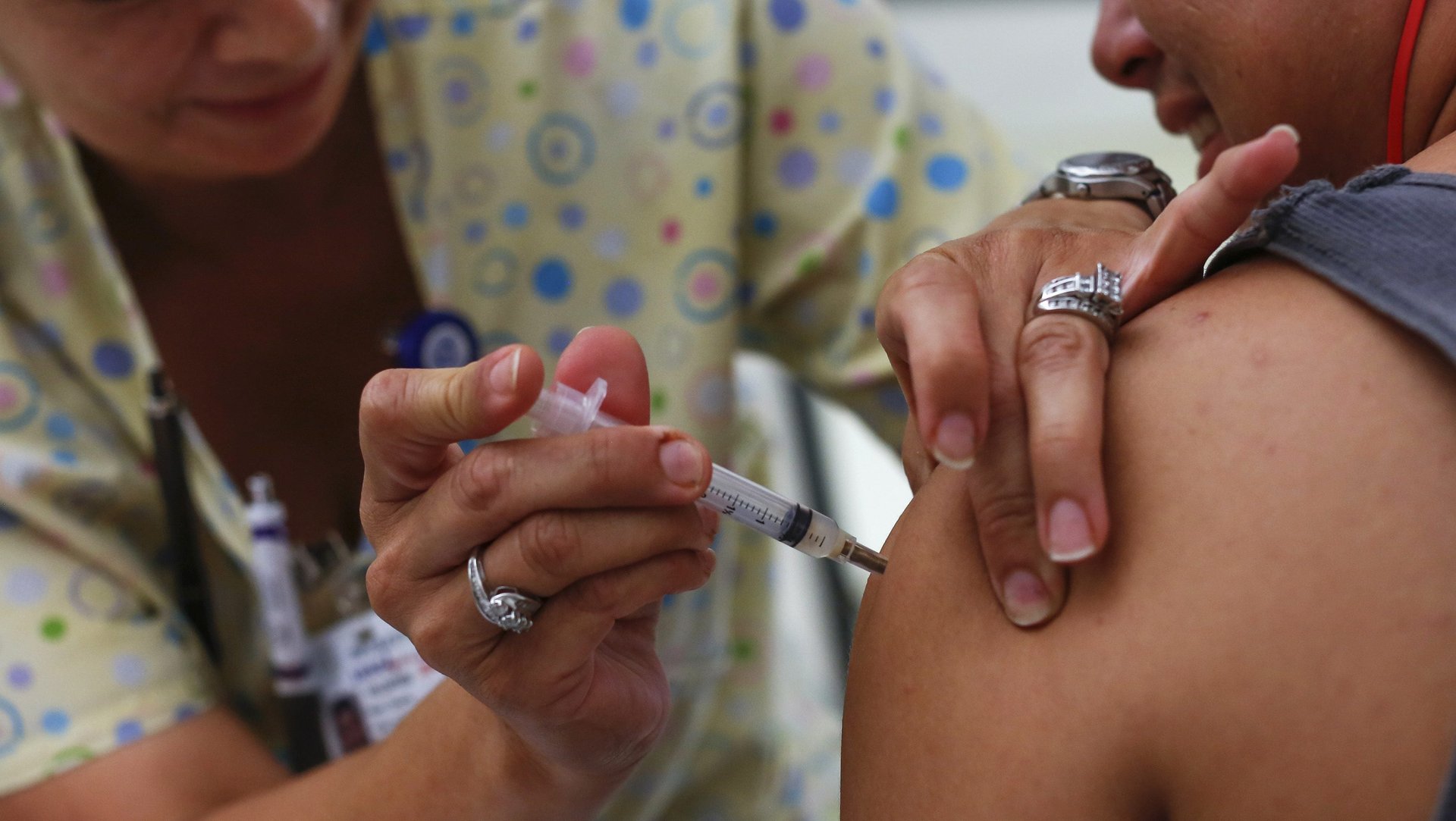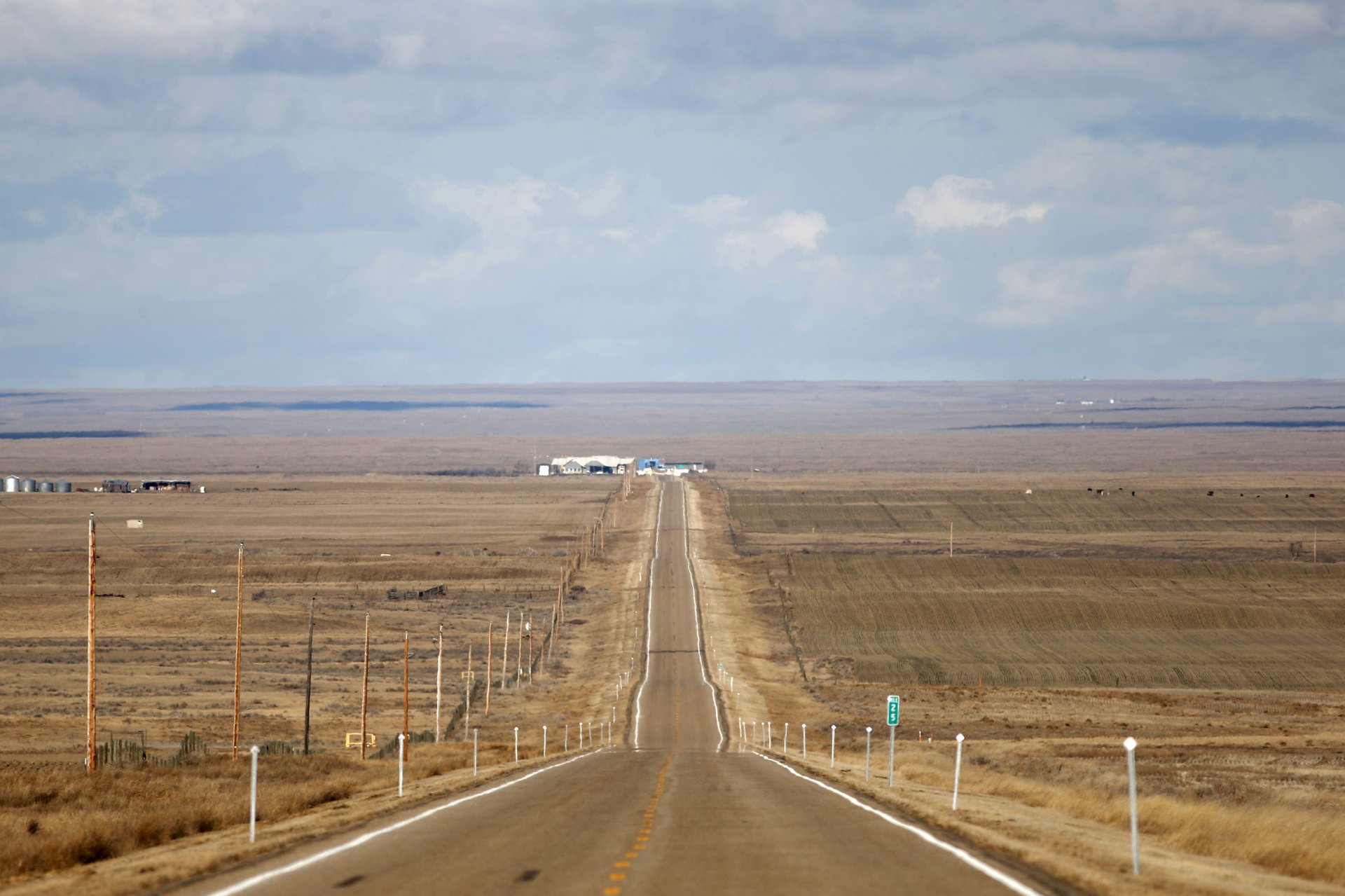The border won’t protect Canadians against American anti-vaxxers
Canadian medical and public health experts are worried about the potential impact the American anti-vaccine movement might have north of the border—a concern based as much on precedent as it is on the strength of current anti-vaccine rhetoric.


Canadian medical and public health experts are worried about the potential impact the American anti-vaccine movement might have north of the border—a concern based as much on precedent as it is on the strength of current anti-vaccine rhetoric.
In 2015, a measles outbreak that began at Disneyland in California found its way to a non-immunizing religious community in Quebec, brought there by two families returning home from a vacation. More than 150 people in Quebec’s Lanaudière region contracted the virus, which had been eradicated from Canada in 1998. The incident served as a warning to public health officials that Canada is not prepared to deal with infectious disease outbreaks.
Highly contagious viruses like measles spread among pockets of unimmunized people. With the anti-vaccine movement gaining ground in America, those pockets have become bigger and more numerous. Several US states already allow parents to opt out of vaccinating their children for personal reasons. High vaccine exemption rates contributed to the 2015 Disneyland measles outbreak, prompting California to prohibit parents from using personal belief as an excuse to keep their kids unvaccinated (rates increased 17% in children aged 12-15 months following the outbreak).
Peter Hotez, a pediatrician and dean of the Baylor National Tropical School of Medicine in Houston, recently analyzed the number of Texan children opting out of school vaccinations over the last 13 years. He found that more than 45,000 children opted out in 2016—a sharp increase from the less than 2,500 that received non-medical exemptions in 2003.
The Republicans’ recently pulled bill to replace Obamacare aimed to cut federal vaccine program funding by almost 50%. But Hotez was worried even before this proposed policy change. “2017 could become the year when the anti-vaccination movement gains ascendancy in the United States,” Hotez wrote in a Feb. 8 op-ed in the New York Times, “and [the year] we begin to see a reversal of several decades in steady public health gains.”
∞
Disease outbreaks don’t respect national borders when they occur. “If we do see more diseases, like measles, in the US—with all of the travel we have between North America and globally—we can expect those diseases will come here,” says Vinita Dubey, associate medical officer with Toronto Public Health. Over 400,000 people cross the US-Canada border every day, and more than 21 million fly (pdf) on scheduled air service between the two countries every year.
And north of the border, public health officials have a huge problem on their hands. Canada is increasingly susceptible to outbreaks because it lacks a robust immunization registry, both nationally and provincially, with parts of the system still paper-based. The antiquated nature of Canada’s vaccine tracking systems leaves the onus on adults to track their own vaccine status without much government oversight.
It’s a system that has proven inadequate in the past.
In 2003, David Naylor, former dean of medicine at the University of Toronto, called Canada’s handling of the SARS outbreak an “international embarrassment” in a federal report. In that report, he made several recommendations to enhance disease preparedness, including the creation of a national public health surveillance system and a computerized vaccine registry.
Fourteen years later, no such vaccine registry exists.

In 2004, the Canadian federal government invested $135 million to create such a system, but it never fully materialized. Dubbed Panorama, the system was intended to enable the sharing of data on immunization, communicable diseases and other public health outbreaks across all provinces and territories. The project quickly ran into execution, privacy, and funding problems and was only partially implemented in a handful of provinces over the last 13 years.
Today, Canada has a fraction of what was envisioned in 2004—a patchwork system instead of a comprehensive digital registry to defend against the spread of life threatening diseases. Almost all provinces have major difficulties in knowing who has been vaccinated, including some with no registry at all.
Ontario, Canada’s most populated province with more than 13 million people, has some of the largest gaps. A report released in 2015 (pdf) by a Canadian non-profit think tank, the C.D. Howe Institute, said Ontario is failing to meet national targets for most routine childhood vaccinations, including the measles, mumps, and rubella (MMR) vaccine; chickenpox; diphtheria; tetanus; and polio.
This is because a child’s immunization status is tracked only when they enter school, despite the fact that pre-school infants are more vulnerable to disease. Once outside the school system, Ontarians must track their own vaccine status using yellow paper immunization cards that have no digital footprint. There are often gaps in coverage simply because no one is watching.
Other provinces, like Alberta, create an immunization record right at birth, but the responsibility of maintaining up-to-date vaccines quickly falls on parents. This results in children missing vaccine doses or ending up on altered immunization schedules despite their parents not being explicitly anti-vaccination. For example, 92% of Alberta infants receive their first dose of the combined diphtheria, tetanus, pertussis, polio, and haemophilus influenzae vaccine, but only 73% receive the booster dose.
Alberta elementary school teachers, like Brad Gibson, observe such gaps all the time. “Some parents are adamant about not getting [their children] vaccinated,” says Gibson, a St. Albert-based teacher. “But most parents are simply unconscious objectors…. In many cases, the parent would have consented to the jab but just couldn’t be reached so their child misses their shot.”
∞
Immunization rate was a key metric in UNICEF’s 2013 Report Card 11 (pdf), which ranked childhood wellbeing in the world’s 28 richest countries. It listed Canada’s rates of coverage for childhood immunization at 84%—second-to-last. In lieu of a vaccine registry, survey data had to be used to estimate vaccine coverage. The idea of a comprehensive digital vaccination registry isn’t unprecedented—in fact, a Canadian college helped Tanzania, which has a 90% vaccination rate, develop a digital vaccine tracking system last year.
At this moment, Toronto is in the midst of a mumps outbreak among young adults, with 64 confirmed cases to date. The cause of the current mumps spread is simple: many people in their 20s and 30s are not fully protected against the mumps and they have no idea they are at risk.
While the exact scheduling varies by province, two MMR shots are currently recommended for children before the age of six. But up until 1992, only one MMR shot was the standard. Health authorities began running catch-up programs in the mid-1990s when they realized two MMR doses resulted in significantly better immunity —leaving some people born before 1992 up-to-date and others not. Local public health professionals have no way of identifying or reaching the vulnerable individuals because they don’t know who got what and there is no comprehensive public record.
Unable to target messaging towards those who are only partially vaccinated, Toronto Public Health has resorted to sending letters to local bars (pdf) and restaurants near the area of the outbreak.
The US has also experienced outbreaks of the mumps recently, with 5,311 cases reported to the CDC in 2016. In 2012, there were only 229 reported cases. Similar to Canada, the US has no centralized way of tracking immunizations. It’s usually the responsibility of the individual to keep track of their own immunizations. It’s not yet known if the Toronto mumps strain is linked to the American cases.
Dubey says these recent outbreaks are proof that illnesses like measles and mumps can re-emerge and easily cross national and provincial borders. “It’s a reminder that we can’t drop our guard. Leaving such an important public health intervention entirely up to the individual doesn’t make sense.”